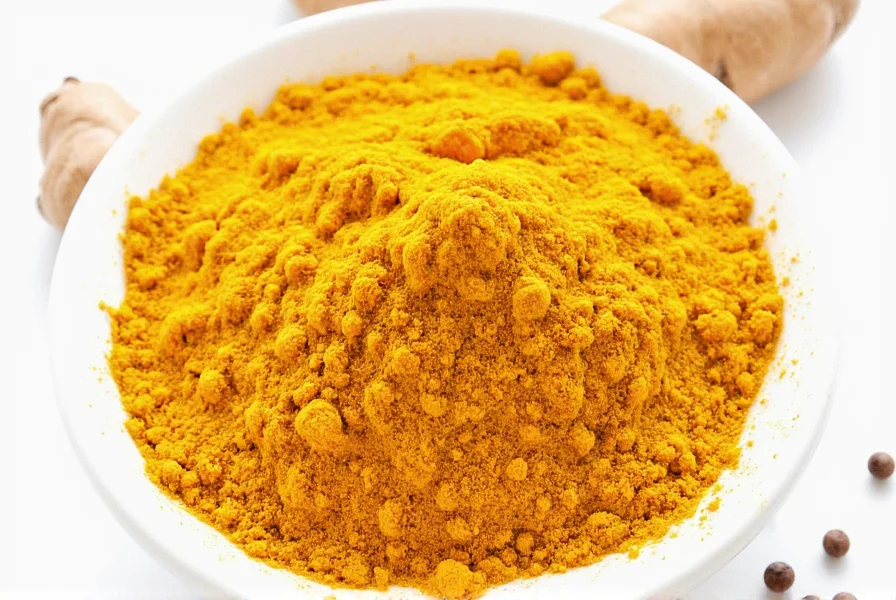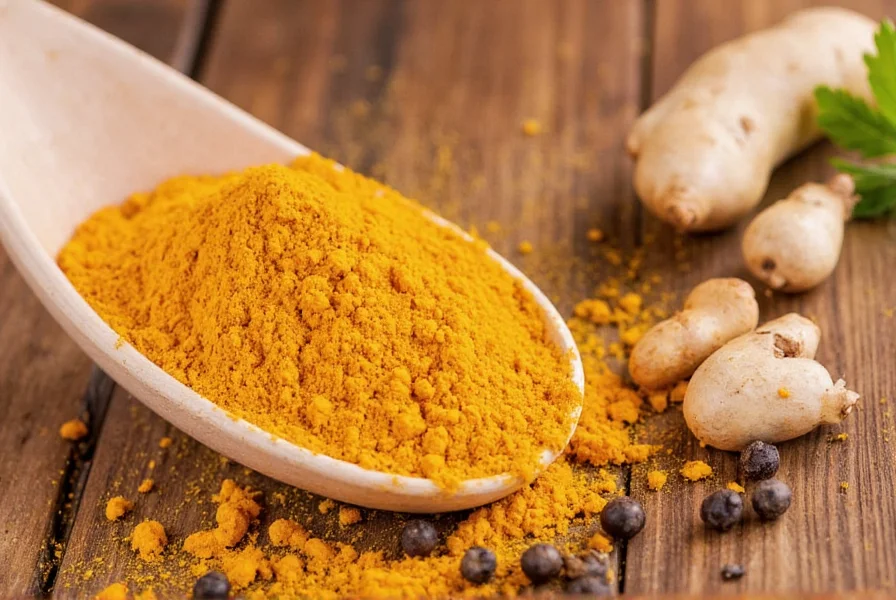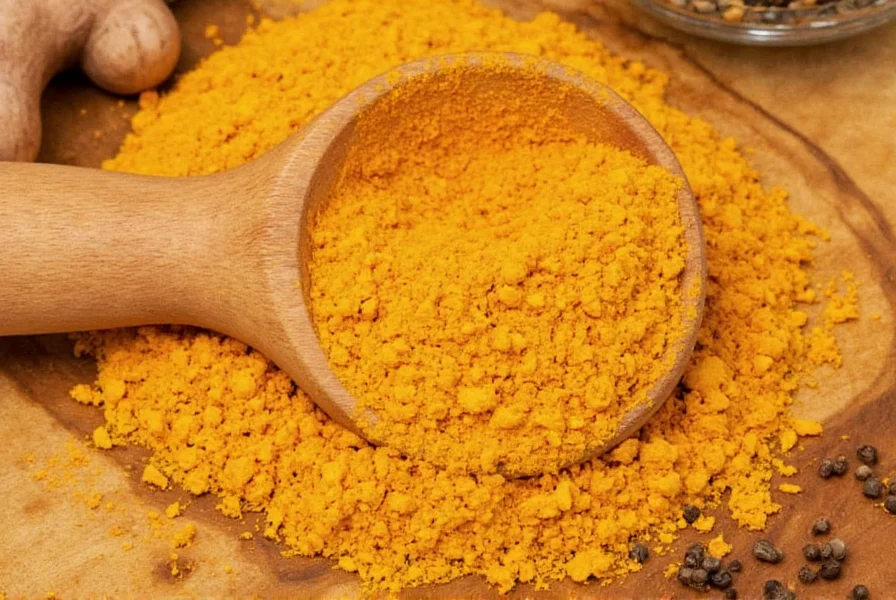When combined, turmeric, ginger, and black pepper form a synergistic relationship that maximizes health benefits through enhanced bioavailability and complementary biological actions. The key scientific principle behind this popular combination involves piperine, the active compound in black pepper, which inhibits certain digestive enzymes and increases the absorption of curcumin—the primary active compound in turmeric—by up to 2,000% according to a landmark Planta Medica study. Without black pepper, curcumin has notoriously poor bioavailability, with most passing through the digestive system unabsorbed.
Ginger contributes gingerols and shogaols, compounds with their own anti-inflammatory and antioxidant properties that work through different pathways than curcumin. This creates a broader spectrum of biological activity when all three are consumed together. Research published in the Journal of Medicinal Food demonstrates that this combination produces more comprehensive anti-inflammatory effects than any single spice alone, particularly for managing chronic inflammation markers.
The Scientific Mechanism Behind the Combination
The magic of combining turmeric with ginger and black pepper lies in their complementary biochemical interactions. Curcumin, while potent, faces significant metabolic challenges:
| Compound | Natural Source | Key Benefit | Bioavailability Challenge |
|---|---|---|---|
| Curcumin | Turmeric | Powerful anti-inflammatory and antioxidant | Naturally low absorption; rapidly metabolized |
| Piperine | Black pepper | Enhances absorption of other compounds | Increases curcumin bioavailability by up to 2,000% |
| Gingerols | Ginger | Anti-inflammatory, digestive support | Moderate bioavailability; complements curcumin pathways |
When consumed together, piperine inhibits the glucuronidation process in the liver and intestines that normally breaks down curcumin. This allows more curcumin to enter the bloodstream and remain active longer. Meanwhile, ginger's compounds work on different inflammatory pathways, creating a more comprehensive effect. A 2020 review in Nutrients confirmed that this combination produces synergistic effects greater than the sum of individual components.

Evidence-Based Health Benefits
While not a cure-all, the turmeric with ginger and black pepper combination offers several evidence-supported benefits:
Enhanced Anti-Inflammatory Effects
Clinical studies show this trio significantly reduces inflammatory markers like C-reactive protein (CRP) and interleukin-6. A randomized controlled trial with 120 participants published in Clinical Interventions in Aging found that subjects taking a curcumin-piperine supplement with ginger experienced 35% greater reduction in joint pain compared to curcumin alone after 8 weeks.
Improved Digestive Health
All three spices support digestive function through different mechanisms. Turmeric stimulates bile production, ginger accelerates gastric emptying, and black pepper enhances enzyme activity. Research in the World Journal of Gastroenterology indicates this combination may be particularly beneficial for managing occasional digestive discomfort.
Antioxidant Protection
The combined antioxidant capacity of these spices creates a more robust defense against oxidative stress. A laboratory study in Food Chemistry measured significantly higher ORAC (Oxygen Radical Absorbance Capacity) values when these spices were combined compared to individual use.
Practical Usage Guidelines
To maximize benefits from turmeric with ginger and black pepper, consider these evidence-based recommendations:
Optimal Ratios and Preparation
Research suggests an effective ratio of 1 part black pepper to 10-20 parts turmeric by weight. For culinary use, this translates to approximately:
- 1 teaspoon turmeric powder
- ⅛ teaspoon black pepper
- ½-1 teaspoon fresh ginger (grated)
Adding healthy fats (like coconut oil or olive oil) further enhances absorption, as curcumin is fat-soluble. Heating the mixture slightly (as in golden milk recipes) also increases bioavailability without degrading the active compounds.

Daily Intake Recommendations
Based on clinical studies, effective daily amounts include:
- Turmeric: 500-2,000 mg of curcumin (approximately 1-3 teaspoons of powder)
- Black pepper: 5-20 mg of piperine (about ⅛-¼ teaspoon)
- Ginger: 1-2 grams of fresh ginger or 250-500 mg of dried ginger
These amounts can be divided across meals. Consistency matters more than single large doses, as curcumin has a relatively short half-life in the body.
Safety Considerations and Potential Interactions
While generally safe as culinary ingredients, higher therapeutic doses require consideration:
Medication Interactions
Turmeric with ginger and black pepper may interact with certain medications:
- Blood thinners: Curcumin and ginger both have mild anticoagulant properties
- Diabetes medications: May enhance blood sugar-lowering effects
- Chemotherapy drugs: Piperine may affect drug metabolism
Consult your healthcare provider before using therapeutic doses if taking prescription medications.
Who Should Use Caution
Individuals with these conditions should consult a healthcare provider before regular high-dose use:
- Gallbladder issues (turmeric may stimulate bile production)
- Bleeding disorders
- Pregnancy (high doses not recommended)
- Before surgery (discontinue 2 weeks prior)
Quality Matters: Selecting Effective Products
Not all turmeric with ginger and black pepper products deliver equal benefits. Look for:
- Certified organic ingredients to minimize pesticide exposure
- Third-party testing for heavy metals (especially important for turmeric)
- Standardized extracts specifying curcumin and piperine content
- Products containing phospholipids or other bioavailability enhancers beyond just black pepper
For culinary use, fresh ingredients generally provide more active compounds than pre-ground spices. Store turmeric and ginger in the refrigerator and black pepper in a cool, dark place to preserve potency.
Managing Expectations: What the Research Really Shows
While popular media sometimes overstates benefits, the scientific evidence for turmeric with ginger and black pepper presents a more nuanced picture:
- It shows promise for managing inflammation associated with osteoarthritis and metabolic syndrome
- Effects are generally modest and build over weeks of consistent use
- Works best as part of a comprehensive approach including diet and lifestyle
- Not a replacement for medical treatment for serious conditions
A comprehensive review in Advances in Experimental Medicine and Biology concluded that while results are promising, more large-scale human trials are needed to establish definitive therapeutic protocols. The combination appears most effective for supporting general wellness and managing mild inflammatory conditions rather than treating serious diseases.
Frequently Asked Questions
How much black pepper should I use with turmeric for maximum absorption?
Research indicates that adding just 1/8 to 1/4 teaspoon of black pepper to 1-3 teaspoons of turmeric provides optimal absorption enhancement. This small amount contains enough piperine (5-20 mg) to increase curcumin bioavailability by up to 2,000% without overwhelming the flavor of your dish. You don't need large quantities of black pepper to achieve the bioavailability benefits.
Can I get the same benefits from turmeric alone without black pepper?
You'll receive some benefits from turmeric alone, but significantly less. Without black pepper (or another bioavailability enhancer), your body absorbs only about 1% of curcumin. The piperine in black pepper inhibits certain metabolic processes, allowing up to 20 times more curcumin to enter your bloodstream and remain active longer. For therapeutic effects, combining with black pepper is essential.
What's the best way to consume turmeric with ginger and black pepper for maximum benefits?
The most effective method combines these spices with healthy fats and gentle heat. Try making 'golden milk' by simmering 1 teaspoon turmeric powder, ½ teaspoon grated ginger, and 1/8 teaspoon black pepper in 1 cup of coconut milk or another fat-containing liquid for 10 minutes. The fat helps dissolve curcumin, the heat increases bioavailability, and the black pepper enhances absorption. Consuming this combination with a meal further improves uptake.
How long does it take to notice benefits from regular turmeric with ginger and black pepper consumption?
Most people begin noticing subtle benefits after 2-4 weeks of consistent daily use, with more significant effects appearing around 8-12 weeks. Research shows inflammatory markers typically decrease gradually over this timeframe. Unlike pharmaceuticals that produce immediate effects, these natural compounds work cumulatively. For joint comfort, many studies measure improvements at the 8-week mark. Consistency is key—daily consumption matters more than occasional large doses.
Are there any side effects from taking turmeric with ginger and black pepper regularly?
When consumed in culinary amounts (1-3 teaspoons turmeric daily), this combination is generally well-tolerated. At higher therapeutic doses, some people may experience mild digestive upset. Black pepper in large quantities can cause heartburn in sensitive individuals. Those with gallbladder issues should consult a healthcare provider, as turmeric stimulates bile production. The combination may interact with blood thinners and diabetes medications, so consult your doctor if taking prescription medications.











 浙公网安备
33010002000092号
浙公网安备
33010002000092号 浙B2-20120091-4
浙B2-20120091-4